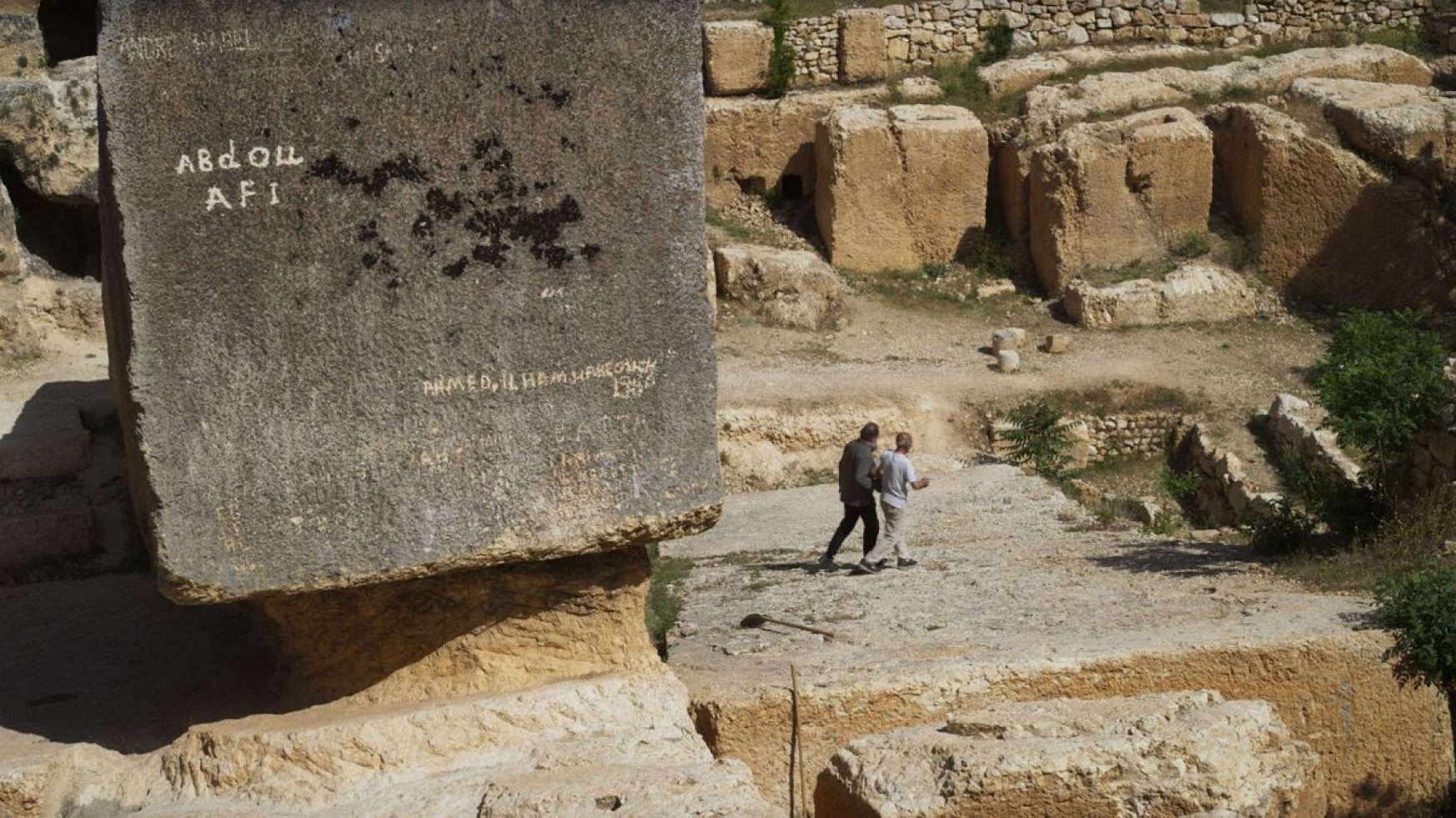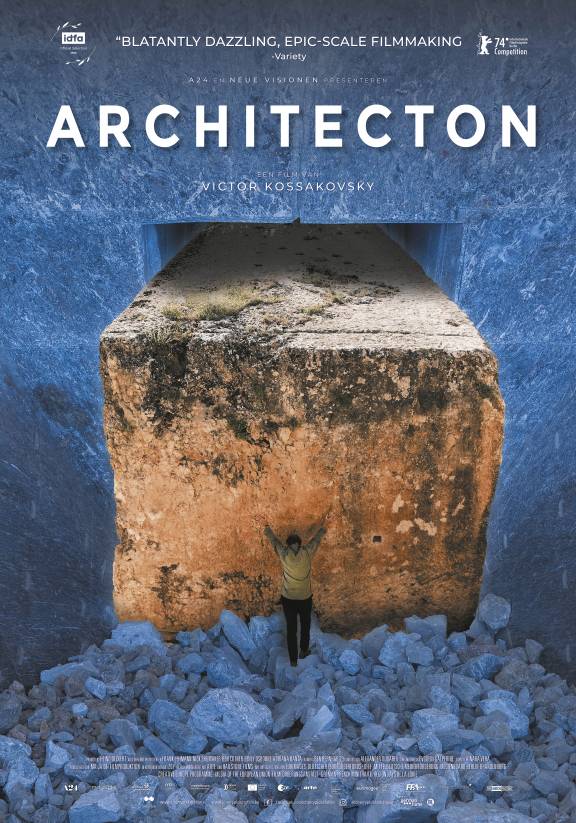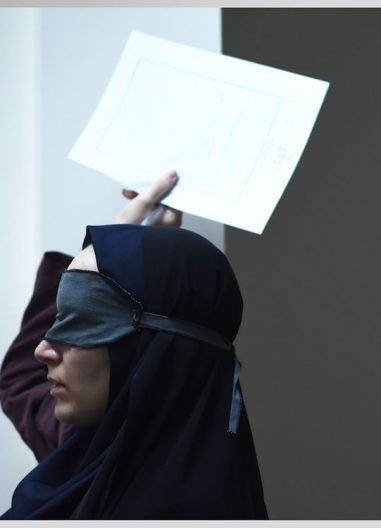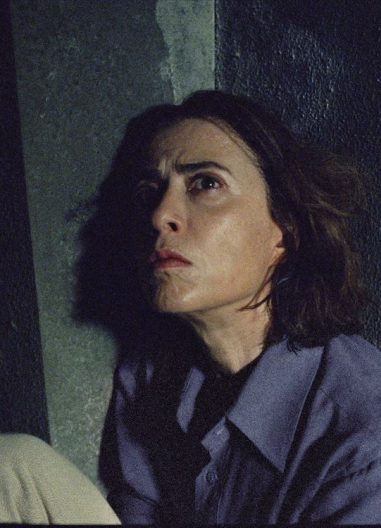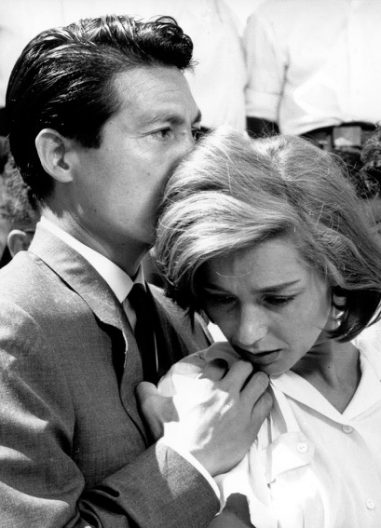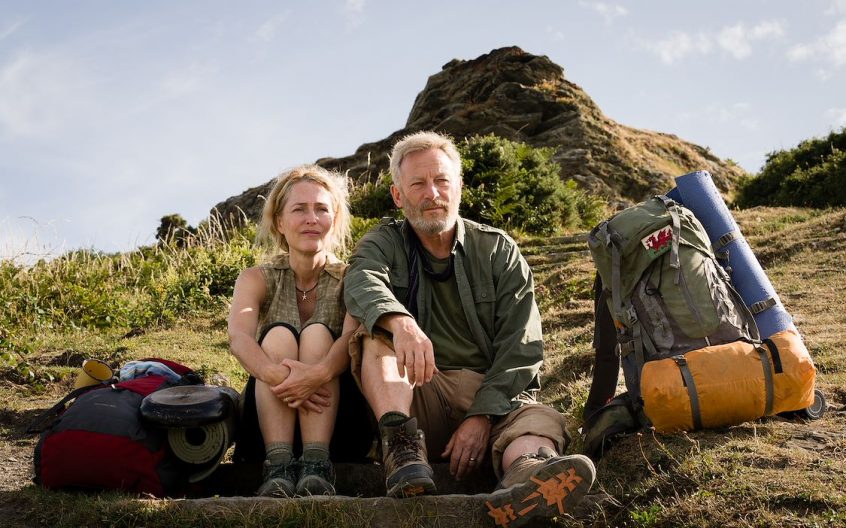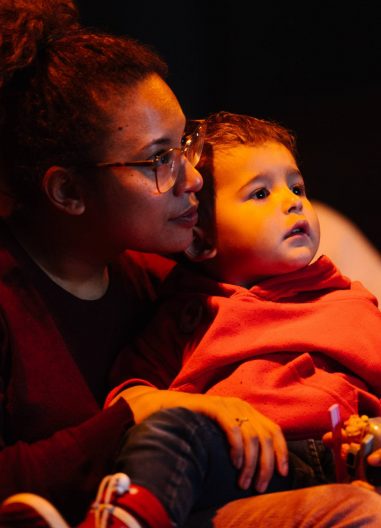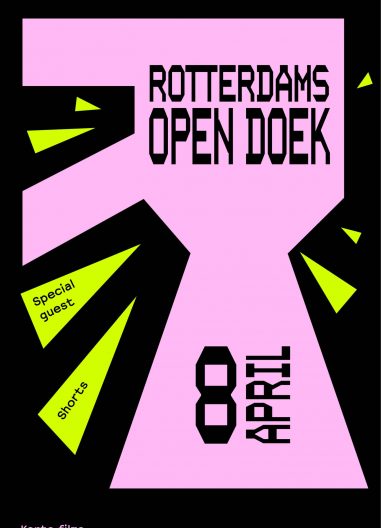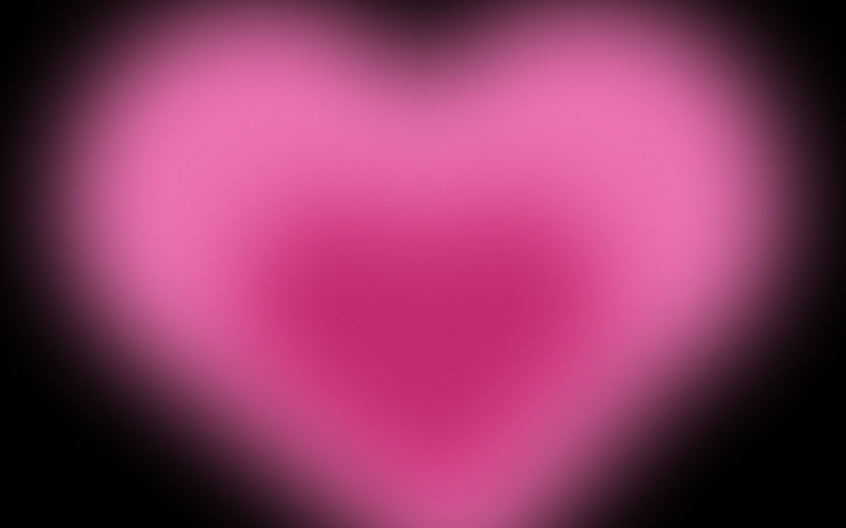Architecton
Op 24 april presenteren LantarenVenster en het Architectuur Filmfestival Rotterdam (8 – 12 oktober 2025) een voorpremière van Viktor Kossakovsky’s Architecton. Architect Janneke van der Velden zal de voorafgaand aan de voorstelling een inleiding geven over beton en materiaalgebruik in de bouw.
Op water na is beton het meest gebruikte materiaal ter wereld, zo stelt Viktor Kossakovsky in Architecton. Met die constatering laat hij dit slot van zijn ‘A-trilogie’ conceptueel aansluiten bij het tweede deel, waterdocumentaire Aquarela (2018) dat op zijn beurt volgde op ¡Vivan las antipodas! (2011).
Beeldend verbindt hij de films met slowmotion-opnames waarin vallende rotsblokken en stenen als rivieren lijken te stromen. Begeleid door de score van componist Evgueni Galperine, geven ze deze visuele symfonie over de bouwmaterialen beton en steen een hypnotiserende kracht. Kossakovsky gaat van de tempelruïnes van Baal naar door het Russische leger gebombardeerde Oekraïense gebouwen, en van door aardbevingen verwoeste huizen in Turkije naar steengroeves waar met grof geweld bouwmateriaal wordt gedolven.
Zijn historische reflectie op constructie en destructie is gecentreerd rond een landschapsproject van de Italiaanse architect Michele De Lucchi die, in protest tegen het onstandvastige moderne bouwen en als les in bescheidenheid tegenover de natuur, in zijn tuin een ‘magische cirkel’ creëert waarin mensen geen stap mogen zetten.
- 19:10
Kies tijdstip
- Film
- filmspecial
Op 24 april presenteren LantarenVenster en het Architectuur Filmfestival Rotterdam (8 – 12 oktober 2025) een voorpremière van Viktor Kossakovsky’s Architecton. Architect Janneke van der Velden zal de voorafgaand aan de voorstelling een inleiding geven over beton en materiaalgebruik in de bouw.
Op water na is beton het meest gebruikte materiaal ter wereld, zo stelt Viktor Kossakovsky in Architecton. Met die constatering laat hij dit slot van zijn ‘A-trilogie’ conceptueel aansluiten bij het tweede deel, waterdocumentaire Aquarela (2018) dat op zijn beurt volgde op ¡Vivan las antipodas! (2011).
Beeldend verbindt hij de films met slowmotion-opnames waarin vallende rotsblokken en stenen als rivieren lijken te stromen. Begeleid door de score van componist Evgueni Galperine, geven ze deze visuele symfonie over de bouwmaterialen beton en steen een hypnotiserende kracht. Kossakovsky gaat van de tempelruïnes van Baal naar door het Russische leger gebombardeerde Oekraïense gebouwen, en van door aardbevingen verwoeste huizen in Turkije naar steengroeves waar met grof geweld bouwmateriaal wordt gedolven.
Zijn historische reflectie op constructie en destructie is gecentreerd rond een landschapsproject van de Italiaanse architect Michele De Lucchi die, in protest tegen het onstandvastige moderne bouwen en als les in bescheidenheid tegenover de natuur, in zijn tuin een ‘magische cirkel’ creëert waarin mensen geen stap mogen zetten.

